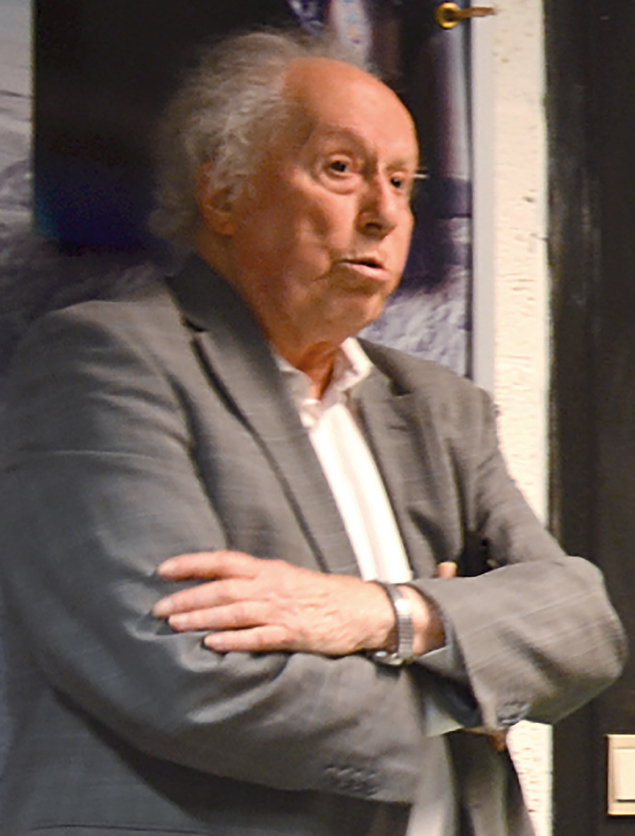
Jean Sacton, who put Belgium at the forefront of major discoveries in fundamental physics and the development of associated technologies, died peacefully in his home in Brussels on 12 February, aged 86. He combined his scientific qualities with great human ones, as a firm boss but always present, attentive, warm and intentioned.
Jean Sacton defended his bachelor’s thesis on mesic atoms in nuclear emulsion at Université Libre de Bruxelles (ULB) in 1956, continuing there for his PhD. From 1960 to 1965, he surrounded himself with young researchers focusing on the properties of hyper-fragments produced by the interactions of K mesons in nuclear emulsions, which required significant human resources to scan the emulsion foils with microscopes. He defended his thesis in 1961 and, three years later as an associate lecturer, became head of the newly created department of elementary particle physics.
At the end of the 1960s, Sacton became professor and a member of various committees, including the management of the Belgian Interuniversity Laboratory for High Energies.
The foundation in 1972 of the Interuniversity Institute for High Energies (IIHE) was largely due to his efforts during the preceding decade. Co-directed for many years by its two founders (Sacton for ULB and Jacques Lemonne for Vrije Universiteit Brussel), IIHE has become the main centre for experimental research in particle physics in Belgium, and promotes close collaboration with other Belgian institutes.
In the 1970s the IIHE strongly contributed to the scanning and analysis of data from the giant bubble chambers GARGAMELLE and BEBC. In 1973 IIHE staff scanned one of the three events that spectacularly confirmed the existence of the weak neutral current, for which Sacton, together with the other members of the Gargamelle collaboration, received the European Physical Society’s High Energy and Particle Physics Prize in 2009. Other firsts that Sacton was involved in during the bubble-chamber era included the first direct observation of charged charmed particles in nuclear emulsions, and the measurement of the violation of scale invariance in deep-inelastic scattering.
Later, the IIHE, in collaboration with the University of Antwerpen and the University of Mons-Hainaut, contributed to the DELPHI experiment at LEP, for which they built the electronics for the muon chambers. The laboratory also engaged in the H1 collaboration at HERA, DESY. The Belgian contribution to H1 included the construction of two cylindrical multi-wire proportional chambers and associated data acquisition all of the detector’s multi-wire proportional chambers, during which Sacton continuously ensured that technical staff were retrained to keep up with the rapid pace of change.
At the same time, he became a member of the European Committee for Future Accelerators (as chair from 1984 to 1987), the CERN Super Proton Synchrotron Committee, the CERN Scientific Policy Committee, and the extended Scientific Council of DESY. While dean of the ULB sciences faculty from 1991–1995, he remained active as director of the laboratory, leaving to his teams the task of analysing DELPHI, H1 and CHORUS data, and preparing the IIHE contribution to the CMS experiment. In 1994 he became president of the particles and fields commission of the International Union for Pure and Applied Physics and a member of the International Committee for Future Accelerators, and from 1991–1994 chaired the High-Energy Physics Computer Coordinating Committee. He formally retired in 1999.
Jean Sacton lived a major scientific adventure starting from the discovery of the first mesons to the completion of the Standard Model. Through his quiet strength, professionalism, foresight and entrepreneurial spirit, he founded, developed and sponsored this field of research at ULB and made it shine far beyond.







